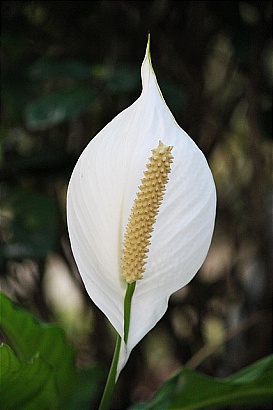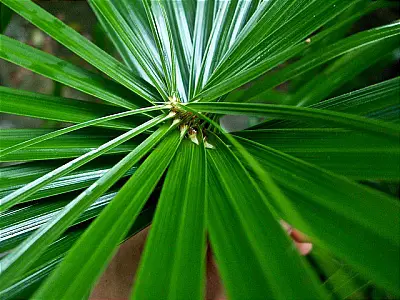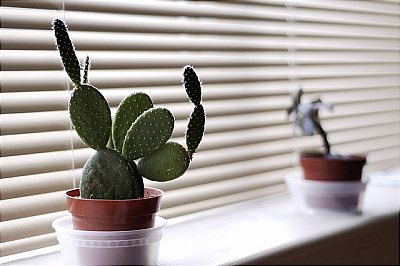Do you want to find ways to incorporate more plants into your interior design? Houseplants are great for this purpose, but maintaining them can be challenging if you don’t have a green thumb. There are many resilient houseplants available, so relax. Here is a list of the top 10 hardiest houseplants that I’ve personally found to be completely indestructible.
Invigorate your workspace or make your home more welcoming with these ten plants. In addition, their presence can have positive effects on people’s minds, such as boosting productivity and relieving stress. So, let’s check out some of the best options for hardy houseplants!
These 10 beautiful options range from easy-care succulents to eye-popping tropicals, so no matter where in the world you call home, I’m confident you’ll find a plant here that complements your decor and fills in those dead spots.
1. The Yucca
The Yucca is a hardy houseplant that has been around since the days of yore. It’s an easy-to-care-for plant, and its individual spikes lend it a striking look. The leaves are long and sword-shaped, with sharp points along their edges. These plants can survive in low humidity and light levels while still thriving when they receive enough water or fertilizer. They also adapt well to most soils without requiring any special attention from you.
When it comes to keeping your Yucca happy, consistency is key; make sure to give them regular waterings during the growing season but don’t overwater as this could lead to root rot. If you’re looking for a way to add some character to your home, then Yucca should be at the top of your list! Its spiky form adds dimension and texture to any room, making it perfect for adding visual interest even in small spaces like apartments or offices.
With proper care, these tough plants will last for years so you won’t have to worry about replacing them anytime soon – great news if you want a little green addition that stays put! Transitioning now into our next topic: papyrus – another sturdily rooted species of indoor foliage…
2. Papyrus
Papyrus is a slightly unusual indoor plant that requires very little attention. They prefer cool temperatures and bright light, and if you place the pot in a shallow dish of water, they will survive for a long time, even if you don’t remember them for weeks.
Papyrus is one of the great choices for even novice gardeners. Here are 4 reasons why this plant should be at the top of your shopping list:
- Its low maintenance needs: Papyrus thrives in indirect sunlight and doesn’t require frequent watering.
- It’s attractive appearance: The unique texture of its leaves adds visual interest to any room or outdoor space.
- It’s air-purifying properties: As with many other plants, papyrus helps filter toxins from the air around you as it takes in carbon dioxide and releases oxygen.
- Its longevity: With proper care, papyrus can live for decades!
Papyrus makes an excellent addition to any home, whether indoors or out – no matter what level of experience you have with gardening. Plus, since it requires minimal attention once established, you won’t need to worry about keeping up with regular maintenance like pruning or fertilizing; just sit back and enjoy its beauty! This tough little plant will bring long-lasting joy without needing much effort on your part.
3. Peace Lilies

Peace Lilies will survive in most indoor conditions, though they prefer indirect sunlight. Keeping the leaves moist helps these plants to flourish, so keep a spray bottle nearby and mist them whenever you notice it.
Peace Lilies are a great choice for those looking for low-maintenance houseplants. They’re easy to care for, requiring only indirect light and occasional watering – they even do well in artificial lighting! Peace lilies have attractive white blooms that can last up to two months at a time, giving you plenty of enjoyment from this hardy plant. Plus, their large glossy leaves help make them an attractive addition to any room.
When it comes to pests or diseases, Peace Lilies are relatively resistant. However, watch out for spider mites which may become problematic if the air is too dry around your plant. With regular misting and cleaning of its foliage with tepid water will help keep these pesky bugs away. In general, though, you don’t need to worry about much else when keeping a Peace Lily happy indoors!
Overall, Peace Lilies offer beautiful blooms and hardiness that make them one of the most popular houseplant choices today. They’re an especially good choice for beginners who want a striking yet simple option that won’t take too much effort to maintain. With proper care, this long-living species can be enjoyed in homes all over the world for years to come.
4. Ferns

All Ferns are ideal for keeping in a household bathroom. They love moist air, don’t like direct sunlight, and like to keep their leaves well-misted – perfect for joining you in the shower when you forget to water them.
Ferns have become one of the most popular houseplants due to their eye-catching foliage and hardiness.
Here are some top tips for growing healthy ferns:
Care:
- Provide plenty of humidity, moist soil, and indirect light.
- Don’t let them dry out or sit in too much direct sunlight.
- Trim off any browned leaves regularly.
Propagation:
- Ferns can be propagated by division or through spores.
- The division is the simplest method if you already own a mature plant; simply separate it into two parts using scissors and pot each part separately.
Pests & Diseases:
- Watch out for slugs, snails, aphids, mealybugs, and scale insects which can damage your plants’ health.
- If your fern is wilting despite proper care, check for root rot caused by overwatering or poor drainage. Treat with fungicide as soon as possible to prevent the further spread of the disease.
5. Cacti

Cacti are the survivors of the desert and also of any house. They can last a long time without water, and keeping them in a pot with holes in the bottom reduces the risk of over-watering.
The transition from ferns to cacti is like a journey from the lush and damp tropics to an arid desert. Where you’ll find rows of spiky plants that look as if they’ve been formed by nature’s own sculptor. Cacti are incredibly low maintenance, require minimal water, and can survive in almost any environment.
A great thing about these hardy houseplants is that their flowering varieties come in all sorts of colors – yellow, pink, red, orange even purple! There’s something for everyone who wants to bring some life into their home with colorful flowers blooming during wintertime when outside there aren’t many other options. Plus, cactus plants need only occasional watering which makes them perfect for those occasional forgetful moments when you remember your plant needs tending after it has already gone thirsty for days or weeks.
Cacti also have many types available in various sizes too so anyone wanting one will be able to fit it into whatever space they have whether it’s large or small. They do well indoors on windowsills but may need extra lighting depending on the species of cactus chosen since some varieties love full sun while others prefer shade. With the right care and attention – especially when planting outdoors – a cactus could live for decades providing not only beauty but ongoing joy for years to come!
Their durability and resilience make them truly special additions to any garden or indoor collection of houseplants. From ornamental succulents with interesting shapes like globes or cylinders to tall columnar varieties reaching heights up to 6 feet (2m), the possibilities with cacti seem nearly endless!
6. Aloe plants
Aloe plants are not only medicinal but extremely simple to look after. Placing in a pot with sandy soil helps, as they do not like to be overwatered, and the sand will help dry out the soil. They don’t like harsh sunlight, perfect for indoor living, and only need watering every few days.
If you want a low-maintenance houseplant, an aloe plant is a fantastic option. Besides being low-maintenance and difficult to eradicate, they also have many advantages that make them a great choice.
The gel found inside aloe leaves is commonly used in medicines and topical ointments due to its antibacterial and antifungal properties. It has also been used to treat acne, sunburn, dry skin, and wounds (such as cuts, bruises, and scrapes) with success.
Aloe plants require minimal care, with waterings every 2–3 weeks during the growing season (spring through fall) and slightly less frequent waterings during winter months when temperatures drop. They prefer well-draining soil and lots of sunlight, making them ideal for window sills or sunny windowsill spots indoors.
With proper care, aloes can last for years! As such, these resilient succulents truly stand out among other harder-to-keep houseplants – making them a superb choice for beginners and experienced gardeners alike.
7. Aspidistra
The ultimate indoor plant, however, has to be the Aspidistra. These hardy plants, like dark corners, never need pruning and can survive long periods of drought – handy for when you go on holiday and forget about them! Keeping pots of aspidistra on patches of artificial grass is the ideal low-maintenance indoor garden.
A lot of people tend to think that these houseplants are difficult to take care of, but nothing could be further from the truth! They’re actually one of the easiest kinds you can get – plus, they look amazing in any room.
Aspidistras have been cultivated for centuries in both Japan and China. These low-maintenance plants need only a weekly watering to maintain a healthy growth cycle year-round, despite their minimal demands for light and water. Despite their resilience, Aspidistra requires indoor cultivation because leaf damage or wilting from exposure to too much sun or cold can occur. Moreover, pests like mealybugs and spider mites enjoy munching on these plants, so it’s wise to be on the lookout for them.
Aspidistra can be used in a wide variety of settings and styles because of this, making their placement in your home an afterthought. Because of the size of their leaves, they can be used to cover a wide area and add both greenery and texture to a room. Aspidistra is a great option if you don’t want to spend a tonne of money but still want something eye-catching for your home because of its unusual foliage and low maintenance requirements.
8. Ponytail Palm
The Ponytail Palm is one of the most popular hard to kill houseplants. Not only does it look exotic, but its adaptability makes it a great choice for any type of home environment. Here are some reasons why this plant should be considered:
* It’s drought tolerant and can survive with minimal water.
* It requires low light levels which make it perfect for dimly lit areas.
* Its leaves grow in an attractive curve and create a nice contrast against other greenery.
* It doesn’t require frequent maintenance or pruning, since its growth rate is slow-moving.
This plant can also tolerate temperature changes well, making it ideal for both indoors and outdoors settings. The Ponytail palm has been known to stay alive in extreme temperatures as long as there is enough moisture present in the soil. This means that you won’t have to worry about your plants dying due to fluctuations in temperature when placed outside during summer months or inside near heating vents during winter months!
What really sets the Ponytail Palm apart from other hard to kill houseplants is its resilience towards pests and diseases. These plants rarely suffer from infestations due to their thick waxy coating on their leaves, so they’re generally very easy to care for and maintain healthy-looking foliage all year round! With proper watering and the occasional pruning, these plants will remain vibrant and beautiful additions to any room or outdoor area in your home.
9. Hoya
An ever-present houseplant, hoya can withstand a variety of conditions indoors. Its resilience and distinctive foliage win widespread adoration from plant enthusiasts. In fact, Hoya plants are said to flourish in low-light conditions and require only once-every-two-weeks waterings. Because of this, they are great for homes that are always on the go or that don’t get a lot of direct sunlight.
Hoyas are not only low-maintenance, but they also contribute significantly to improving indoor air quality. Researchers have found that by filtering out pollutants, these plants can significantly enhance indoor air quality. We could all use less stress and anxiety, and it turns out that they can help even city dwellers breathe easier.
Hoya plants are incredibly long-lasting if cared for properly; some varieties can live up to 15 years or longer! With their attractive leaves and minimal maintenance needs, what’s not to love about this tough little plant?
10. Zamioculcas Zamiifolia
Moving on from the resilient Hoya, Zamioculcas zamiifolia is a great choice for those looking for an even hardier houseplant. It’s popularly known as the ‘ZZ Plant’ and has become increasingly trendy in recent years due to its ability to survive in nearly any environment – making it ideal for busy households where taking care of plants may fall by the wayside.
The ZZ plant originates from Eastern Africa, with thick fleshy stems that can store water and help it withstand drought-like conditions when necessary. This makes it incredibly low maintenance; just give it bright light (but not direct sunlight) and occasional watering every 1-2 weeks. Keep in mind that overwatering could cause root rot so be sure to check soil moisture before doing so! With this level of care, you’ll have a lush green showpiece in no time.
This evergreen perennial is also highly tolerant of different temperatures which means you don’t need to worry about bringing your beloved plant indoors during winter months either.
